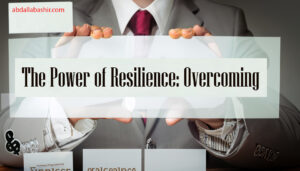
Client Relationships and Communication
- Clear Communication: Establish transparent communication channels with clients from the beginning. Make sure both parties have a shared understanding of project goals, expectations, and timelines.
- Client Onboarding Process:
– Develop a streamlined onboarding process to welcome new clients effectively. This may include sharing project guidelines, introducing your team (if applicable), and outlining the project timeline.
- Regular Updates and Progress Reports:
– Keep clients informed of project progress through regular updates and progress reports. This fosters trust and confidence in your abilities.
Handling Disputes and Challenges
- Conflict Resolution Strategies: – Develop strategies for resolving conflicts or disputes with clients professionally and amicably. This could involve negotiation, mediation, or other dispute resolution mechanisms.
- Mitigating Scope Creep: – Clearly define the project scope in the contract and set boundaries regarding additional work. Communicate any deviations from the original scope and agree on adjustments in writing.
Time Management and Productivity
- Effective Time Management: – Implement time management techniques, such as the Pomodoro Technique or time blocking, to enhance productivity and manage multiple projects efficiently.
- Project Management Tools:
– Utilize project management tools to organize tasks, set deadlines, and collaborate with clients and team members effectively.
Freelancing Platforms and Agencies
- Choosing the Right Platform: – Evaluate freelancing platforms based on your niche, target clients, fees, and community reviews. Select a platform that aligns with your freelancing goals.
- Working with Agencies: – If considering agency collaboration, carefully review contracts, understand commission structures, and ensure the partnership aligns with your career objectives.
Professional Development and Continuous Learning
- Invest in Skill Enhancement: – Allocate time and resources for continuous learning to stay updated with industry trends, new technologies, and emerging skills that can enhance your services.
- Networking and Workshops: – Attend workshops, seminars, and networking events to broaden your professional network and gain insights from industry experts.
Balancing Work and Personal Life
- Establish Boundaries: – Put down clear stopping points between work hours and individual opportunity to keep a solid balance between serious and fun activities. Abstain from workaholic behavior or burnout.
- Self-Care and Wellness: – Prioritize self-care, exercise, and healthy habits to enhance your overall well-being and productivity.
By understanding and implementing these strategies, you’ll foster strong client relationships, navigate challenges effectively, manage your time efficiently, and continue growing as a professional freelancer. In the upcoming chapters, we’ll delve into effective marketing strategies to expand your reach and attract a steady flow of clients. Remember, a well-structured freelance business sets the foundation for a prosperous and fulfilling career.

The Power of Resilience: Overcoming Challenges
In the tumultuous landscape of freelancing, resilience is your most steadfast companion. It’s the ability to bounce back, adapt, and endure through the inevitable challenges you’ll face in your journey. In this chapter, we’ll delve into the essence of resilience and how you can cultivate and apply it to conquer the hurdles that come your way.
Understanding Resilience
- Adaptability in Adversity: – Resilience is the capacity to adapt and bounce back when faced with setbacks, rejections, or failures.
- Mental Toughness: – It’s about developing mental toughness to navigate uncertainties, setbacks, and the unpredictable nature of freelancing.
Building Resilience
- Mindset Matters: – Cultivate a growth mindset, embracing challenges as opportunities for growth rather than as insurmountable barriers.
- Positive Outlook:- Center around the up-sides in any event, during testing times. Positive thinking energizes strength.
- Self-Compassion:
– Be kind to yourself. Recognize your endeavors and progress, regardless of how little.
Strategies to Enhance Resilience
- Develop Problem-Solving Skills: – Break down challenges into manageable parts and tackle them one step at a time.
- Seek Support:- Reach out to mentors, fellow freelancers, or support groups. Sometimes, sharing your concerns lightens the burden.
- Maintain Flexibility: – Be open to altering your plans. Rigidity can break resilience.
Learning from Setbacks
- Reflect and Learn: – After facing a setback, take time to reflect. What did you learn from the experience? How can you grow from it?
- Fail Forward: – Treat failures as stepping stones to success. Every misfortune carries you one bit nearer to a leap forward.
Perseverance: The Heart of Resilience
- Set Clear Goals:- Define your objectives and milestones. Knowing where you’re headed instills determination.
- Celebrate Progress:- Recognize and commend your accomplishments, regardless of how minor. Small victories fuel your perseverance.
Overcoming Freelancing Challenges
- Inconsistent Income: – Build a financial safety net and diversify your client base to mitigate financial instability.
- Client Rejections: – Don’t take rejections personally. Use them as opportunities to improve and refine your proposals and pitches.
- Isolation and Loneliness:- Actively engage in freelancing communities, both online and offline. Networking can combat feelings of isolation.
Thriving Beyond Challenges
- Resilience as a Skill: – Understand that resilience is a skill you can nurture. The more you practice, the more grounded you become.
- Embrace the Journey: – Freelancing is a journey of ups and downs. Embrace it, learn from it, and let resilience be your guiding light.
In the face of challenges, resilience propels you forward. Embrace it, hone it, and let it shape your freelance odyssey. In the next chapter, we’ll conclude this guide, summarizing the key elements that make for a successful and fulfilling freelancing career.
